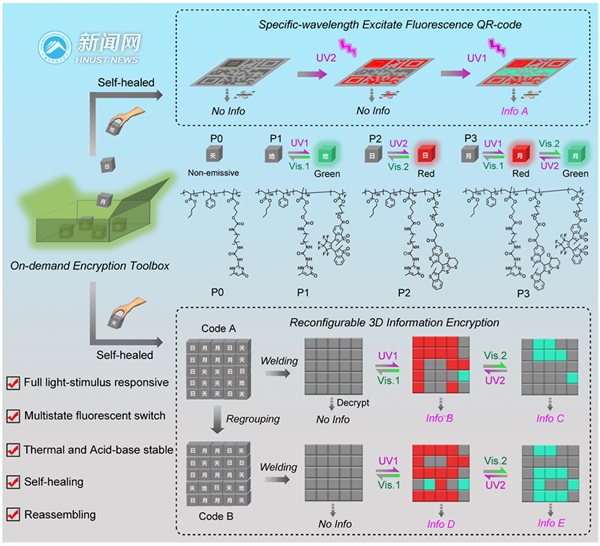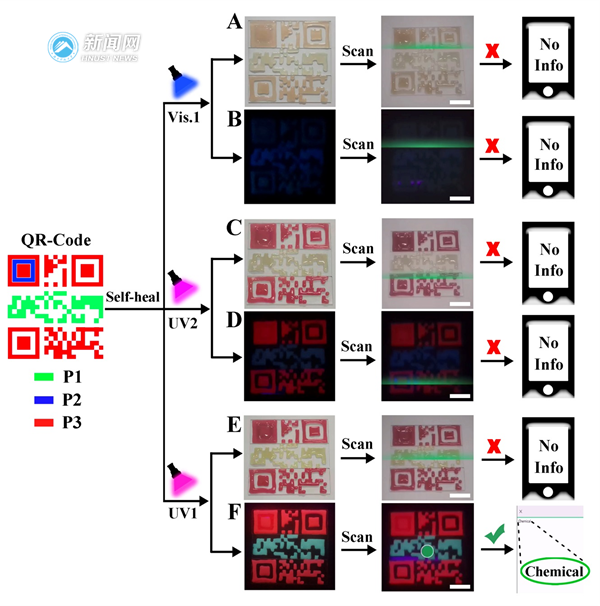Photoswitchable fluorescent polymer, featuring non-destructive and high spatiotemporally resolutive, captivates much attention in the field of optical information encryption. Thus, realizing reconfigurable multi-layer information encryption has always been a challenge for researchers.

Inspired by the movable-type printing technology in ancient China, the research group, led by Professor Chen Jian, a member of Key Laboratory for Theoretical Organic Chemistry and Functional Molecules of the Ministry of Education, and Professor Cui Jiaxi from University of Electronic Science and Technology, developed a reconfigurable on-demand information encryption toolbox based on the previous relevant studies. They synthesized a reconfigurable photoswitchable multistate fluorescent polymer. It offered a new strategy to devise the complex reconfigurable multi-layer optical information encryption anti-counterfeiting material and realized the multistate mutual switch from non-emissive and red to green fluorescence, and applied successfully to reconfigurable 3D encoded encryption and specific-wavelength excitate fluorenscence QR-code information encryption.

The study has been recently published in Science China Materials, a famous domestic journal in the field of materials study included in the Science Citation Index(SCI). Jiang Jiawei, a joint training postgraduate student of HNUST and Xiangtan University, and Zhang Peisheng, an associate professor of HNUST were both the lead authors of the paper. Their research has been sponsored by National Natural Science Foundation of China and Hunan Science Fund for Distinguished Young Scholars.
(Translated by LI Jiaojiao, Hao Xiaoyong)